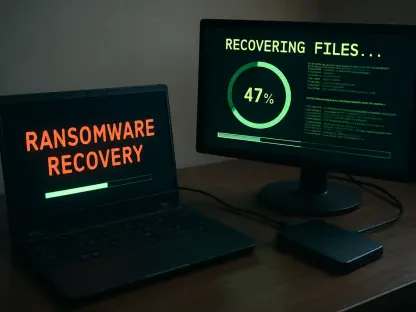The cybersecurity realm today is dictated by the rapid evolution of threats, namely AI-driven malware and advanced ransomware. In this environment, AI-Driven Intrusion Detection Systems (IDS) play a pivotal role, countering these sophisticated hazards by utilizing artificial intelligence and machine learning to dynamically learn and predict potential risks. The fusion of AI with IDS bolsters real-time threat detection and prevention, proving essential in guarding against the increasingly complex assaults on critical infrastructures and sensitive domains like healthcare.
Current State and Industry Overview
In 2025, AI-driven IDS have become critical in the cybersecurity landscape, responding to the complex threats that modern digital environments face. Their significance lies in the ability to detect and counteract threats in real-time while minimizing false alarms. The technology’s scope extends across various sectors, with prominent players like Darktrace, Vectra AI, and Cisco Secure IDS leading the market. These companies harness self-learning AI and behavioral analysis to enhance security measures effectively. Regulatory frameworks strongly influence this field, demanding compliance and reinforcing security through stringent standards and laws.
Trends and Market Projections
Key Trends Influencing the Industry
Key trends are reshaping AI-driven IDS by integrating emerging technologies to tackle evolving cyber threats. AI has significantly impacted malware development, creating more adaptable threats capable of bypassing traditional defenses. Ransomware-as-a-Service (RaaS) exemplifies this shift, offering tools that make attacks more accessible and frequent. The opportunity for AI-IDS lies in its potential to mitigate these threats by providing sophisticated detection and response mechanisms, making it an essential component of modern cybersecurity strategies.
Market Data and Forecast
The IDS market is on an upward trajectory, anticipated to maintain a Compound Annual Growth Rate (CAGR) of 5.4% through the coming years. This growth is driven by the demand for innovative solutions such as cloud-based security services and smart video verification. Players like Google Cloud have set industry standards by offering comprehensive detection capabilities without complex infrastructure. As organizations increasingly adopt cloud-first strategies, the IDS market is poised for continued expansion, shaping security practices across diverse environments.
Challenges and Solutions
AI-driven IDS face technological, regulatory, and market challenges. Constantly evolving threats require these systems to enhance their detection capabilities continually. Adhering to regulatory standards poses compliance complexities, necessitating strategic adaptations. As a solution, integrating advanced anomaly detection models like EAID-OADRHM offers a multi-layered approach, ensuring robust security while aligning with regulations. Innovation and collaboration across sectors will be crucial in addressing these challenges and reinforcing cybersecurity defenses.
Regulatory Landscape
Significant laws and standards continue to shape the AI-driven IDS industry. These regulations, essential for maintaining security integrity, demand rigorous compliance and have been evolving to accommodate technological advancements. Such changes impact industry practices, compelling organizations to revamp security measures. Compliance underpins these activities, ensuring that AI-IDS not only detect intrusions effectively but also adhere to established legal and ethical standards, fostering trust and safeguarding sensitive information.
Future Outlook
The trajectory of AI-driven IDS promises continued evolution with emerging technologies and market disruptors on the horizon. As threats grow more sophisticated, IDS must innovate to anticipate and mitigate these dangers effectively. Shifts in consumer preferences toward integrated and seamless security solutions present new growth opportunities. With technological advancements and changing market dynamics, AI-IDS are set to become even more integral to robust cybersecurity postures, extending their reach and impact across industries.
Conclusion and Recommendations
The findings underscore AI-driven IDS as indispensable components of cutting-edge cybersecurity. To capitalize on this potential, organizations should invest in these innovative systems to safeguard digital assets effectively. Future growth will likely center around integrating advanced detection algorithms, automated responses, and seamless interconnectivity. Emphasizing innovation and adaptability in cybersecurity strategies ensures preparedness against emerging threats, offering a robust line of defense in the digital age.









